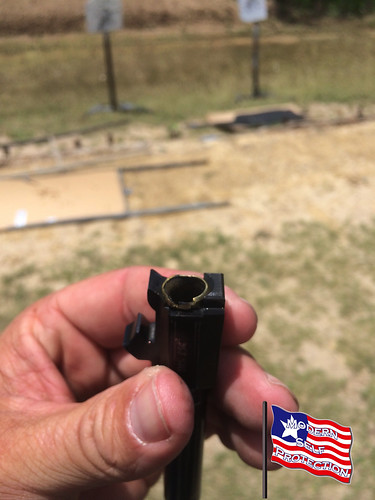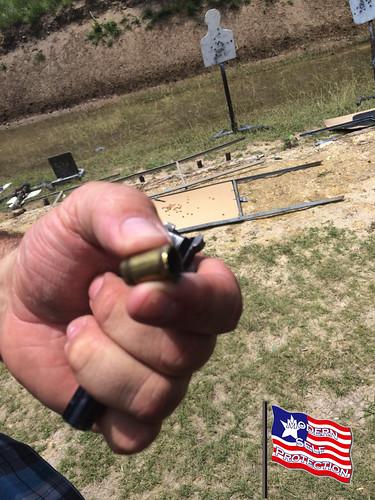Two weeks ago I taught a course to a great group of doctors. I learned that they seem to have great hand-eye coordination and picked up things amazingly well. As a group they really surprised me. They also had a bunch of different (and high end) guns. Half the class borrowed striker fired guns the other half had the high-end guns. Two out of twelve guns broke and had to be removed from the line.


A Sig 229 in .357 Sig blew apart. No one was hurt and we didn’t know there was a problem until one of my safety officers couldn’t clear a malfunction. The back of the casing was ripped off after the bullet went down the barrel and left the outside of the brass stuck in the chamber. I pulled the gun apart and used pliers to yank the brass out.
I put the gun back together and we went back to shooting. The next round out of the Sig and another piece of brass wouldn’t come out. We knocked it out with a rod and then I inspected the gun. The entire extractor was missing. We switched out the gun with a 226 and we where back in business.
The other gun that failed was a Glock 23. The magazine wouldn’t stay in. Every-other round the magazine would fall out of the gun. The student couldn’t get more the two rounds at a time out of the gun. At first he thought it was his grip and I let him try to sort it out. Then I fired the gun and the mag fell out. With a little wiggle the mag would come out when pulled on. The student had tried to put a new something in there and didn’t put it together right or got the wrong parts. We replaced that gun.
So out of that class, there was an 18% failure rate of the guns. It happens. What are you going to do if it happens to you? Do you have a plan B? Have you practiced it?
The loudest sound ever heard in a gunfight is a “click” when your gun malfunctions (trust me it is). If your gun doesn’t work, can you fix it? Do you know immediate action and remedial action drills? What if neither works and you need a tool to fix your gun? What’s your plan B?
My point isn’t to give you a simple plan but make you think ahead and practice your plan.
When I worked as an Armored Car Guard in Long Beach CA I carried two 1911s, one on each side. My plan was simple; if the first one went down I’d draw the second one and keep fighting. I always thought I’d just hold onto the first one and stick it back into my holster when I had a chance. Didn’t want to leave my gun lying around for someone else. But when I practiced it, every time I put myself under any stress I would simply drop my first gun (hurts when it’s your custom 1911) and draw my second one. I never could change that, but kept the plan (luckily I never had to use it).
Whatever your plan B is that you just thought of while you where reading this, go out and practice it. I have several plan B’s for different situations. And I practice a lot of them. From dumping my primary weapon and getting a backup into the fight (you do carry a backup, right?), to running at the aggressor while I empty my snub nosed revolver so that I am on top of the attacker when my gun runs out of ammo.
Go with the plan that is natural for you. Once you have an idea start practicing. You’ll find little things like dropping your gun. That may be acceptable or may not be. My plan shouldn’t be your plan. Closing with your aggressor that is trying to kill you may not sound like the best ideas to you, but I’d rather be close if I’m out of ammo.
Figure out your plan. Go practice it. Revise it with what you learned during your practice session. Go practice some more.
Stay Safe,
Ben